Have you ever woken up in the middle of the night feeling hot and clammy? You may be experiencing moisture trapped beneath your mattress. This unwanted dampness can cause various health concerns, like skin irritations or asthma flare-ups. It also creates an ideal environment for bacteria, dust mites, and other allergens to thrive in.
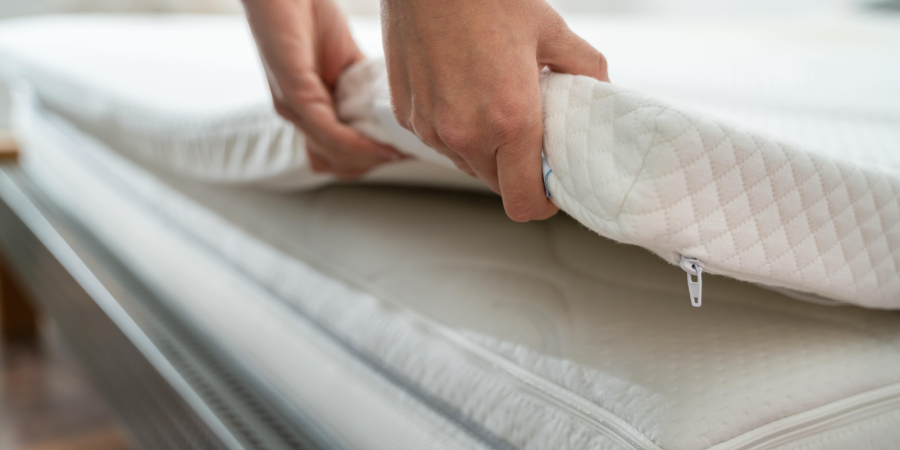
Whether dealing with a humid climate or bodily perspiration, taking measures to prevent moisture under your mattress is crucial.
Fortunately, there are ways you can stop this problem before it starts — by taking steps to prevent moisture from accumulating under your mattress! In this blog post, we’ll go over several tips that will help you achieve a safe and dry sleeping environment for a more comfortable sleep each night. Keep reading to learn more about how to prevent moisture under mattress.
What Will You Need?
Before you start, make sure to have the following items on hand:
- Mattress protector/cover or waterproof mattress pad
- Dehumidifier
- Towels and rags
- Baking soda
- Vacuum cleaner (optional)
Once these items are ready, you can start taking the steps needed to prevent moisture from accumulating under your mattress.
10 Easy Steps on How to Prevent Moisture Under Mattress:
Step 1. Use a Mattress Protector:
The first step in preventing moisture under your mattress is to use a mattress protector, cover or a waterproof mattress pad. These are designed to repel liquids and guard your mattress against spills, sweat, or other fluids. By creating a barrier between your mattress and the sources of moisture, mattress protectors help maintain the longevity of your mattress while keeping it dry.
Step 2. Invest in a Dehumidifier:
A dehumidifier is a worthwhile investment for those living in humid climates or who tend to sweat excessively at night. This device reduces the overall moisture level in the air, preventing condensation from forming underneath your mattress. Place the dehumidifier in a convenient spot near your bed and run it while you sleep. Remember to empty the water reservoir regularly to ensure it functions properly.
Step 3. Regularly Change and Wash Bedding:
Changing and washing your bedding regularly is another effective way to prevent moisture under your mattress. Sweat and body oils can seep into your mattress if left unchecked, adding to the moisture problem. Aim to change your sheets weekly and wash them in hot water to kill any dust mites or bacteria. Remember to include your pillowcases and mattress protector in this cleaning routine.
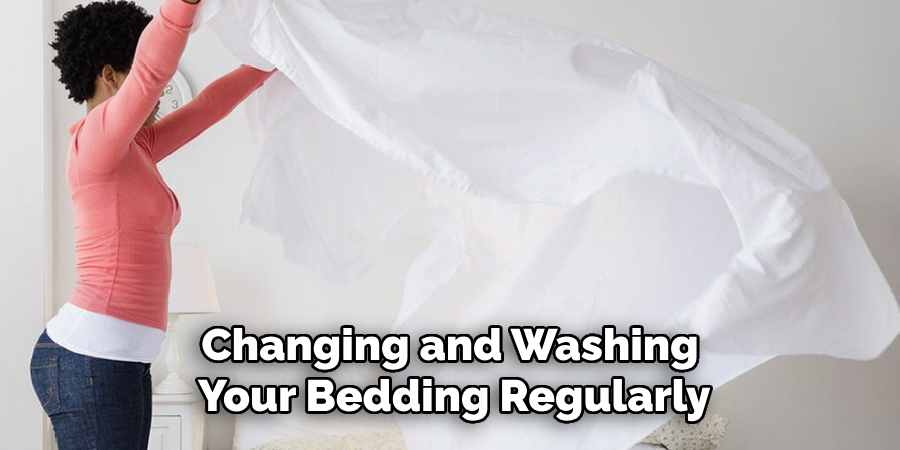
Step 4. Air Out the Mattress:
Airing it out regularly is another efficient method to prevent moisture under your mattress. Take your mattress outside on a sunny, dry day. The sun’s UV rays can help evaporate moisture trapped within the mattress and also act as a natural disinfectant.
If bringing the mattress outdoors isn’t an option, you can also try placing it near a sunny window or simply remove the bedding and allow your mattress to breathe for a few hours. It’s recommended to do this at least once every few months or even more frequently in humid climates.
Step 5. Use Baking Soda:
Baking soda is an inexpensive and readily available solution for moisture problems. Known for its moisture-absorbing and deodorizing properties, baking soda can be sprinkled across the surface of your mattress to absorb any remaining dampness. Leave it on for several hours or overnight. Afterward, vacuum up the baking soda to reveal a fresher, drier mattress. Repeat this process regularly to prevent moisture buildup.
Step 6. Use a Fan or Air Conditioner:
Utilizing a fan or air conditioner can also prevent moisture under your mattress. These can help circulate air and reduce humidity levels in your room. If using a fan, aim it at the mattress to speed up the drying process. Maintaining a cooler bedroom temperature for those with air conditioning can help reduce night sweats and consequent moisture buildup.
Step 7. Elevate Your Mattress:
One way to prevent moisture under your mattress is to ensure good air circulation beneath it. You can use a slatted bed frame or place a moisture-resistant barrier like a rubber mat between your mattress and the box spring. Elevating your mattress allows air to circulate underneath it and discourages moisture buildup.
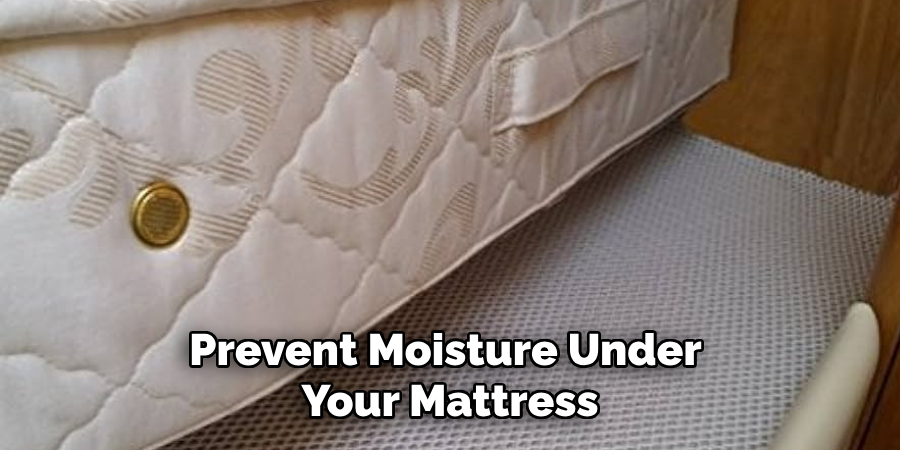
Step 8. Use Mattress Pad with Moisture-Wicking Properties:
Another effective method for preventing moisture under your mattress is to use a mattress pad with moisture-wicking properties. These mattress pads are often made from wool or specialty fabrics designed to draw moisture away from the body, keeping you dry and comfortable while you sleep. This can be especially useful for those who live in humid climates or tend to sweat a lot during the night. Remember to wash the mattress pad regularly to maintain its effectiveness.
Step 9. Regularly Inspect for Signs of Moisture:
To prevent ongoing moisture issues, it’s a good idea to regularly inspect the underside of your mattress for any signs of dampness or mold. If you notice a musty smell or any discoloration, moisture is likely building up. In such cases, address the issue immediately to prevent further damage. Consider contacting a professional cleaning service if necessary, or if the mattress is severely affected, it might be time to replace it.
Step 10. Maintain a Cool Room Temperature:
Keeping your room at a cool, comfortable temperature can help prevent excessive sweating during the night, thus reducing the amount of moisture that can accumulate under your mattress. Consider using fans, air conditioning, or keeping windows open to maintain a good room temperature. Additionally, using breathable cotton sheets can also aid in temperature regulation.
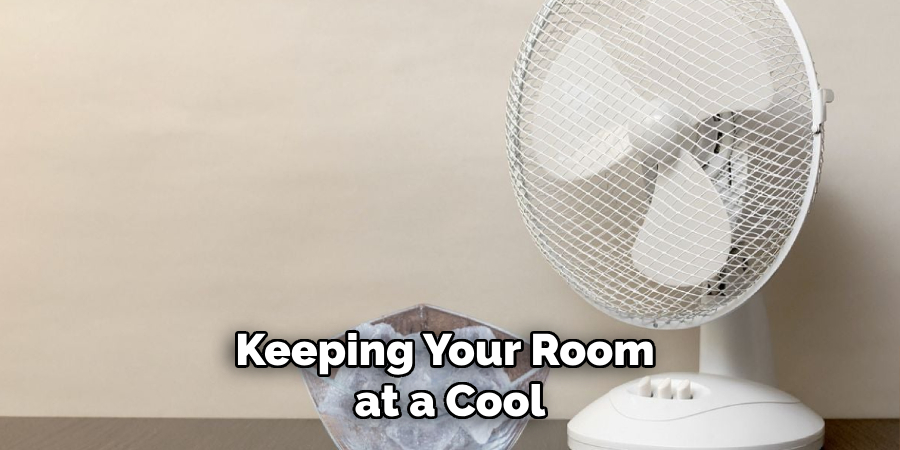
Following these steps can effectively prevent moisture from accumulating under your mattress, leading to a healthier, more comfortable sleeping environment. Remember, it’s not just about immediate comfort – taking care of your mattress also increases its lifespan, giving you long-term comfort and peace of mind.
5 Additional Tips and Trick
- Proper Ventilation: This is the first step in preventing moisture under your mattress. Ensure that your room is well ventilated. Leave windows open when the weather allows, and consider using fans or a dehumidifier to improve air circulation. Remember, good airflow is essential for preventing moisture buildup.
- Use a Moisture Barrier: Invest in a high-quality moisture barrier to prevent moisture seepage into your mattress. These barriers, often made of polyethylene or vinyl, are designed to block moisture and can be placed directly under your mattress. They act as a shield, ensuring that any existing moisture doesn’t permeate the mattress and prevent new moisture from forming.
- Regular Cleaning and Maintenance: Keep your mattress clean and well-maintained. This includes washing your bed linens regularly, vacuuming your mattress, and spot-cleaning any stains. It’s also worth considering a mattress protector, which shields your mattress from moisture and dust, allergens, and other potential contaminants.
- Choose the Right Mattress: Choosing the right mattress is essential for moisture management. Look for mattresses made of materials resistant to mold and mildew or have a built-in moisture-resistant barrier.
- Reduce Humidity Levels: Maintaining low humidity levels in your bedroom is key to preventing moisture under your mattress. Use an indoor hygrometer to measure humidity levels in the room and invest in a dehumidifier if necessary. Consider other strategies for reducing indoor humidity, such as using fans or air conditioning, running exhaust fans while taking showers, and avoiding boiling water on the stove.
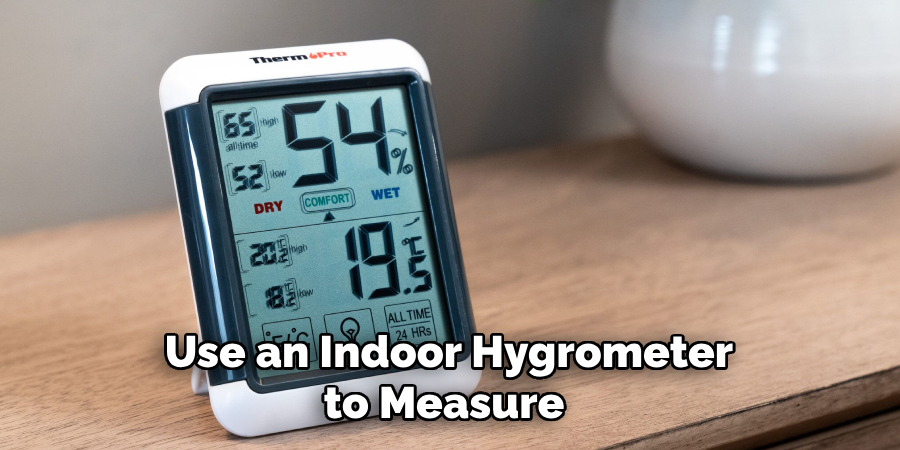
Following these tips and tricks, you can prevent moisture under your mattress and ensure your bedroom stays dry and comfortable.
5 Things You Should Avoid
- Over-Watering Indoor Plants: It’s nice to have greenery in your bedroom, but over-watering your indoor plants can increase humidity levels, leading to moisture buildup under your mattress. Be mindful of your plants’ watering needs and avoid over-saturation.
- Drying Clothes Indoors: Drying clothes indoors can significantly increase the moisture levels in your bedroom. If you have no other option, ensure the room is well-ventilated during and after drying. Consider using a dehumidifier to help reduce the additional moisture.
- Neglecting Regular Mattress Flipping: Regularly flipping your mattress prevents moisture buildup. Not doing so can lead to moisture accumulation, especially if one side is constantly in contact with a solid surface.
- Using Non-Breathable Mattress Covers: Using mattress covers made from non-breathable material can trap moisture, leading to potential mold and mildew. Always opt for breathable, moisture-wicking materials that allow for good airflow.
- Ignoring Signs of Excessive Moisture: The first signs of excessive moisture under a mattress can often be a musty smell or visible mold spots. Ignoring these signs and failing to act promptly can exacerbate the problem.
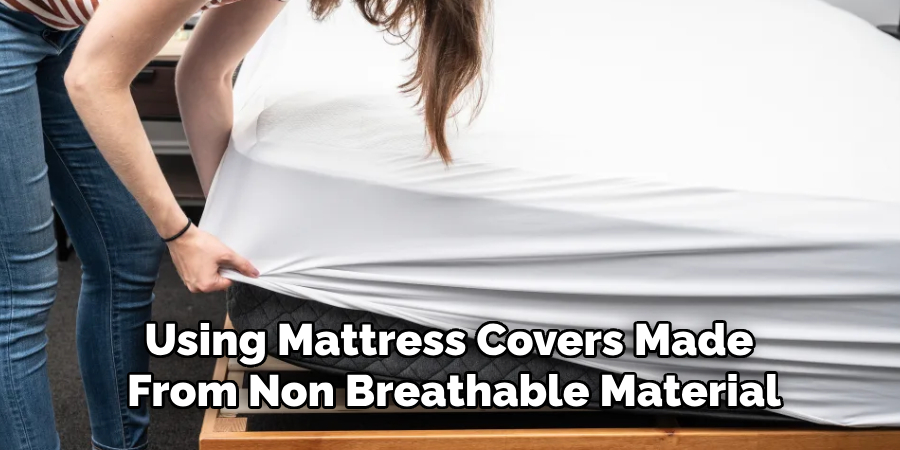
Avoiding these behaviors and taking the above preventive steps can help you keep moisture under your mattress at bay.
What Causes Moisture Under Mattress?
There are a few common causes of moisture accumulation under mattresses. These include poor ventilation, humidity levels exceeding 45%, and non-breathable materials used in bedding or mattress covers. Other factors may include condensation due to temperature differences on either side of the mattress, leaking pipes or water tanks, and faulty drainage systems.
Another cause of excess moisture may be inadequate cleaning and maintenance. Washing bed linens regularly, vacuuming the mattress, and spot-cleaning any spills are essential for keeping moisture levels in check.
Finally, an improperly chosen mattress can contribute to the problem. Additionally, the age of the mattress may play a role in moisture accumulation. As mattresses age, their material can become more porous and less resistant to water, which can lead to increased moisture levels.
By understanding what causes moisture buildup under mattresses, you can take the necessary steps to prevent it from occurring.
Is It OK to Sleep on a Mattress on the Floor?
Sleeping on a mattress on the floor is not recommended. It can increase moisture levels, as the mattress will directly contact the ground. This can lead to mold and mildew buildup, making it difficult to keep your mattress clean and dry. Sleeping on a hard surface can cause discomfort and disrupt sleep quality.
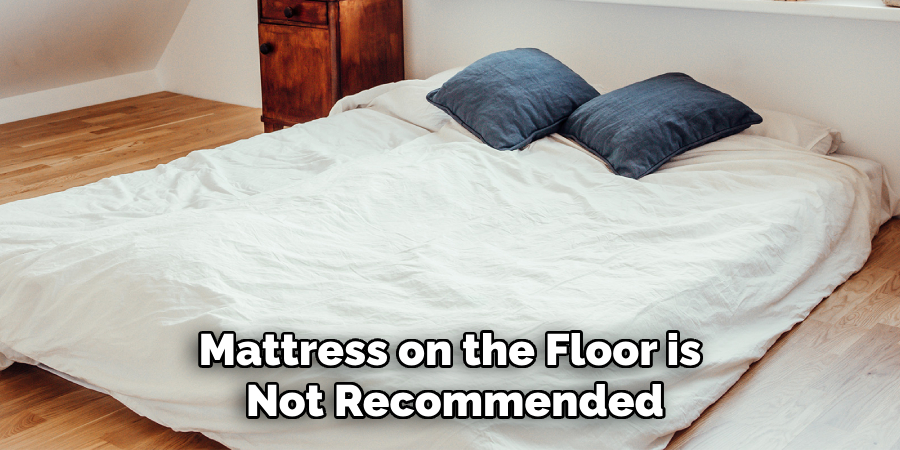
When sleeping on a mattress, it’s important to use a frame with a solid base that provides good airflow. This will help reduce the risk of moisture buildup and keep you comfortable while sleeping. It’s also important to ensure proper ventilation in your bedroom, which can help keep humidity levels low and prevent mold growth.
Conclusion
To finish, how to prevent moisture under mattress is the key to having a long-lasting and comfortable sleeping experience. It can help prevent mold growth, which can cause respiratory issues for yourself and others in your household.
By understanding what causes moisture build-up and how to debug it, you’ll be able to sleep soundly, knowing that those pesky cold nights are gone for good.
To recap, make sure to invest in breathable sheets and covers with protection from dust mites, keep bathroom doors closed while showering or bathing, check regularly for any leaks around windows or fireplaces, purchase a dehumidifier if needed, avoid cleaning carpets whenever possible and open your windows during the day to keep air circulating throughout the house.
Control of the moisture levels in your bedroom is worth it if you want to get the best quality sleep every night!

